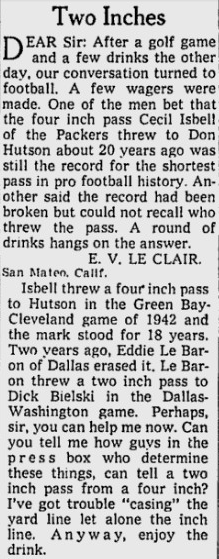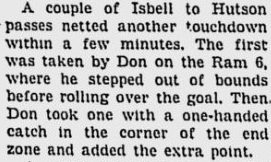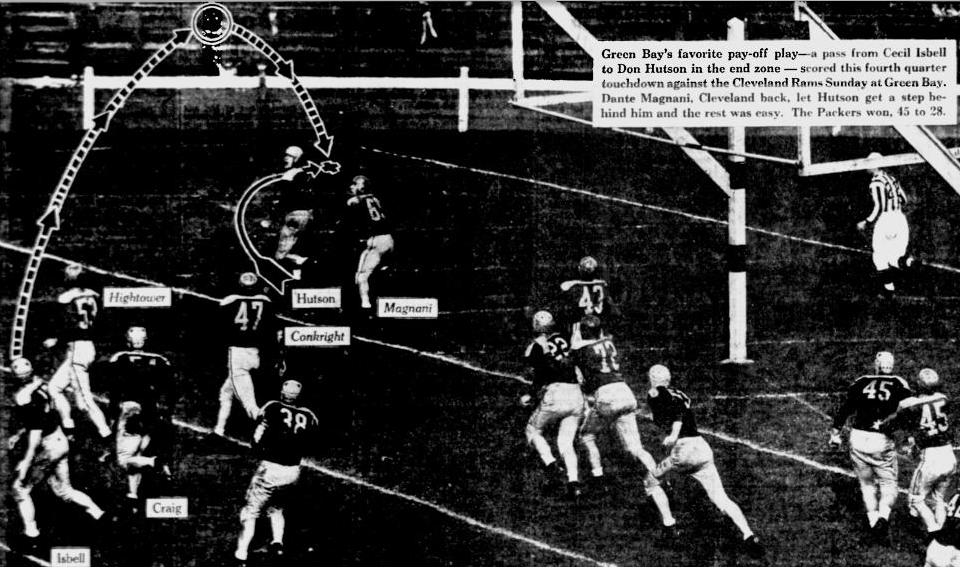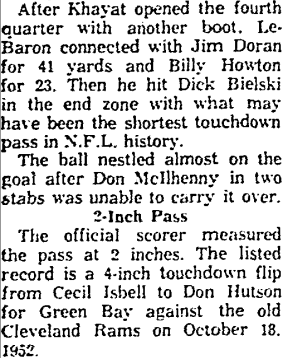There were 66 1-yard touchdown passes in the NFL this season. I know this because I just researched it at pro-football-reference.com. Sixty-six 1-yard TD passes is enough of an abomination in this he-man sport, but this next statistic is even worse: Until Malcolm Butler saved the Super Bowl for the Patriots by picking off Russell Wilson’s throw in the final minute, the defense hadn’t intercepted a single pass in that situation.
As we all know, pro football is out of whack. The offense-defense balance has been lost, probably forever, thanks to a succession of quarterback-friendly rule changes. And few things represent this out-of-whackness better than the 66 1-yard touchdown passes QBs tossed this season. Heck, it’s practically taunting when a team dials up a 1-yard TD pass, especially when the receiver is somebody like J.J. Watt (two caught two of them this year).
Think about it: Against a spread offense, with pick plays and push-offs virtually legal now, how exactly are you supposed to defend a pass from the 1-yard line? Somehow, though, Butler did. If that isn’t reason to celebrate — the defense won for a change! — I don’t know what is.
Once upon a time, the NFL scoffed at throwing such an itty-bitty pass. In 1942, when the Packers’ Cecil Isbell lobbed a 4-incher to Hall of Famer Don Hutson for a touchdown, the league thought it was so hilarious that it added it to the record book. Now, keep in mind: Nowhere in the book could you find the shortest TD run or shortest field goal or shortest anything else. But the shortest TD pass — I’m surprised it wasn’t labeled Biggest Wimpout — was right there on Page 21:
Here’s how Stoney McGlynn of the Milwaukee Sentinel described this not-so-great moment in NFL history:
Even better, the Milwaukee Journal ran a photo of the play — a terrific one. What are the odds of that? Check it out:
As you can see, Isbell, after taking the shotgun snap in the Packers’ single wing, released the ball from the Cleveland 9. (I’m guessing he faked a handoff before throwing.) I particularly like the X-marks-the-spot in the left corner of the end zone, which is where Hutson made the grab.
{Miscellaneous note: Dante Magnani, the Rams defensive back who “let Hutson get a step behind him,” had had a whale of a game, scoring on a 52-yard run and a 67-yard reception. But in those days, of course, you had to play defense, too.)
Anyway, Hutson’s “mark” stood for 18 years. Then Cowboys tight end Dick Bielski broke it by hauling in a 2-inch touchdown heave from Eddie LeBaron in a 1960 game against the Redskins.
The Associated Press’ account read thusly:
(Miscellaneous note No. 2: This happened in the third game in Cowboys history. They went 0-11-1 that first season, so Bielski’s TD must have been one of the high points of the year.)
Naturally, Dick’s feat was included in the record book, too, and the revised entry looked like this:
It wasn’t until 1971 that the NFL stopped listing the “Shortest Pass Reception for Touchdown” among its records. (Bielski and Hutson were still 1-2.) Maybe the league was just starting to lose its sense of humor. Then, too, by the early ’70s the short TD pass was no longer such a novelty. You have to remember: Until the ’30s, an incompletion in the end zone was ruled a touchback. The offense actually lost possession of the ball. That, as much as raging testosterone, is why teams didn’t throw much when they were close to the goal line. They didn’t want to risk a turnover. As it became more of a passing game, though, and as the rules loosened up, most of the risk went out of such a play.
But in Super Bowl 49, glorious Super Bowl 49, we had the proverbial Once in a Blue Moon. On second and goal from the New England 1, Wilson fired to Ricardo Lockette on a quick slant and, lo and behold, Butler broke for the ball and all but plucked it out of Lockette’s hands. Game over (except for some pushing, shoving and punching). Patriots 28, Seahawks 24.
Come to think of it, that would make a great title for the Super Bowl highlight film: Blue Moon Over Arizona.
I’ll close with this from the Aug. 13, 1962, Milwaukee Journal:





